Getting That “Just Right” Feel
Every golfer has had the experience of picking up a club that “just felt right.” Similarly, we’ve picked up clubs that felt terrible. Both experiences are likely related to swing weight.
Swing weight is an under-discussed topic among golfers, but it has a huge impact on how a club feels and plays. In this edition of Golf Club Building 101, Club Champion Founder Nick Sherburne will teach you how to build your clubs to your perfect swing weight.
Tools & Supplies You Need
Swing weight scale
Level
The Tools You Want
Tip weights
Tungsten powder
Hot melt gun or syringe
Lead tape
The Process
Step 1: Get your “dry” swing weight. The is done by putting the club head on the shaft – which has already been cut to length and gripped – without epoxy. Place the club on your swing weight scale and see where you stand.
Step 2: Account for ferrule, glue, and plastic wrap. Adding the ferrule and glue will add about one swing weight point. If you’re building a new head, the plastic wrap can add between 1/3 of a point (for an iron) and 1 point (for a driver). Make sure to consider all this before going forward.
Step 3: Determine your target swing weight.
Step 4: Add weight to the head. Adding two grams to the club head will raise the swing weight by one point.
If you’re working with a steel shaft, the easiest way is to add tip weights. Tip weights are typically sold in weights of 2, 4, 6, 8, or 10 grams. Install the weight into the shaft with epoxy before gluing on the head.
If you’re using a graphite shaft, tip weights can be more difficult to use because the interior diameters of graphite shafts are inconsistent. Because of this, Nick prefers tungsten powder. Tungsten powder is mixed with the epoxy to add weight and raise the swing weight.
Finally, for adding weight to woods, you can use hot melt.
Step 5: Install the club head. Get the full breakdown of how to do this properly HERE.
Alternate Methods
If you want to skip all this messiness, you can use good old lead tape. Some players don’t like the way it looks, but others prefer it. The nice thing about lead tape is that it’s not permanent. You can add a few grams, try it, and go back to a lighter swing weight by simply peeling the tape off. To get off the sticky tape residue, I use Goo Gone.
Common Mistakes
Bad math. If you’re not confident in your ability to do the swing weight math, do an extra dry measurement with the tip weight installed but not glued in. Once you’ve glued it together, you can add more weight via lead tape, but you can’t remove weight without taking the club apart. Measure twice, glue once.
Pro Tips
Make sure that the surface you’re using for measuring swing weight is level. If the surface is tilted, your swing weight measurements will be off. Additionally, keep your swing weight scale in the same location for consistent measurements.
Nick also notes that using tungsten powder in your epoxy is a tough skill to master and should probably be left to experienced builders. This process is largely about trial and error, and there’s no way to shortcut experience. If you want to try this method, experiment with some expendable clubs before using it on your gamers.
Watch the Video HERE
The Full Club Building 101
He founded Plugged In Golf in 2013 with the goal of helping all golfers play better and enjoy the game more.
Matt lives in the northwest suburbs of Chicago with his wife and two daughters.
- Performance Golf Click Stick Training Aid Review - October 18, 2024
- Callaway Opus Platinum Wedge Review - October 17, 2024
- When to Take a Break from Golf - October 15, 2024


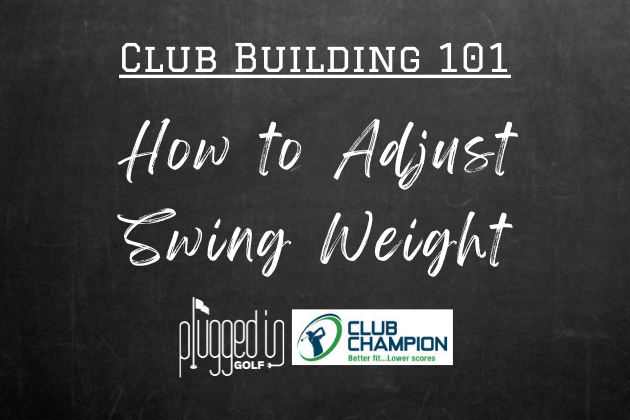
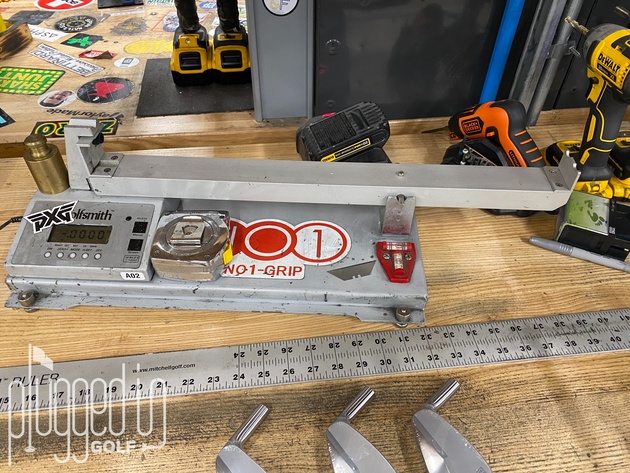

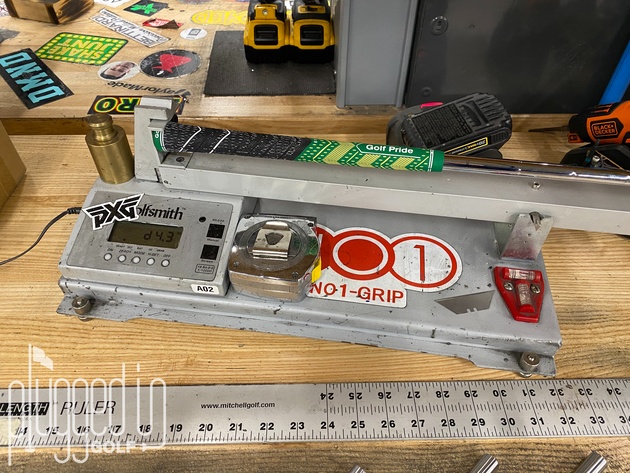
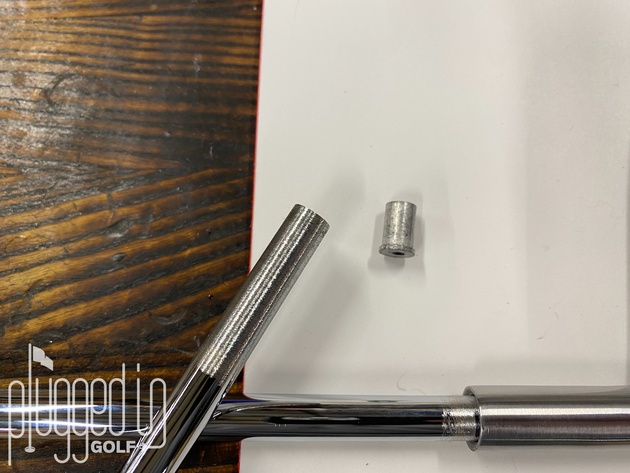
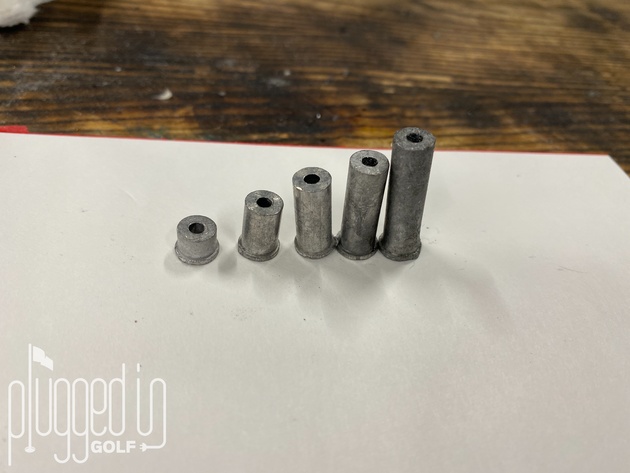
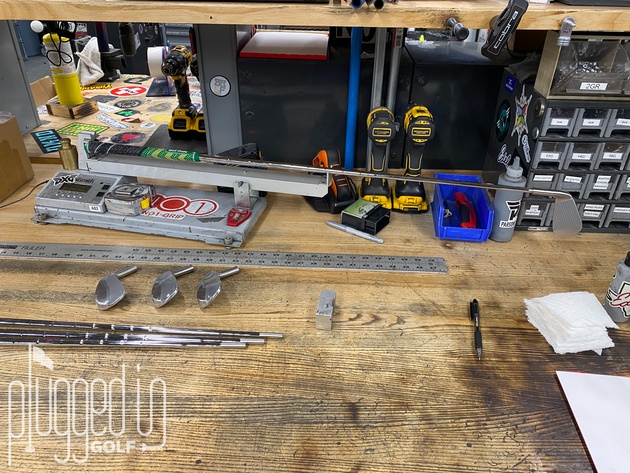
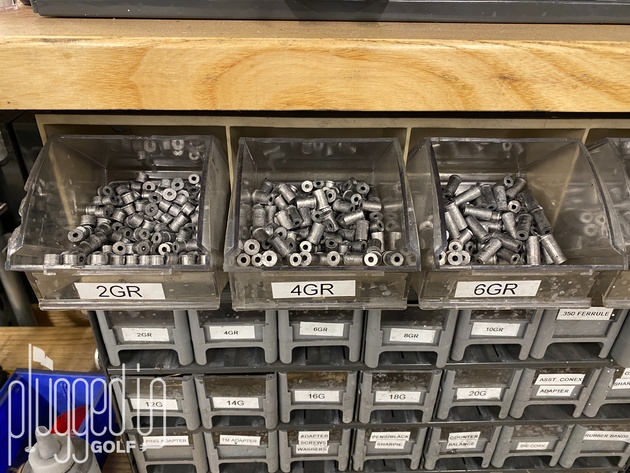












20 Comments
Great article. I prefer to build my clubs without grips on the shafts to allow air to escape through the shaft. I have an array of cut grips that I put on the club to obtain the dry swing weight.
Any ideas on if you want to reduce swing weight rather than add? I’ve got some clubs which measure out at D10 after lengthening them.
Dana,
You can play a heavier grip, add a counterweight, or remove weight from the head.
Best,
Matt
Does going from standard to midsize grips charge swing weight?
Alex,
If the grips weigh more, yes, you will decrease swing weight.
-Matt
I’ve always been flabbergasted that 99.9% of club fitters never consider swing weight, especially for metal woods. Then again, when you go down this rabbit hole it gets deep fast while profit margins plummet. It takes time to figure out and is at the heart of the old “feel is real” saying in golf. For a driver, swing weight is more important than anything in my experience. I recently bought a driver from a friend who swapped a stock 47g grip to a heavy 63g midsize grip. That’s a little over 3 swing weights! (2g in the head, 5g in grip and 9g in shaft weight all equal 1 swing weight). You can very easily end up with a club suited for grandma. D4-D5 is best for almost every adult male golfer for the driver. It’s been tested tried and true. If the industry isn’t going to sell products to help people mess with swing weight (probably a good idea to keep us from ourselves) then retailers and fitters should at least advise and publish more articles like this one to inform players about the massive swing weight changes, feel and playability that simply changing a grip can have on a club you’ve invested a lot in and was designed by engineers to play within a certain spec. Ultimately, feel is real for all golfers, and you might not guess at how often pros ness with driver swing weight. Rarely with irons once they find it. Be careful when swapping driver grips. Most people can feel the difference in 2 swing weights and you may be wondering where that long accurate drive went.
hate it when an old guy puts larger grips on his clubs..could be why they end up selling them…lol..now i can do my grips the first thing i do is rip off them off..maybe these fuys put 3 rolls of tape on their road bikes, tenniis rackets and frying pans
Appreciation to my father who told me about this web site, this
webpage is really awesome.
Bonjour Matt,
Il y a plusieurs années que je n’utilise plus la balance à swingweight, je lui préfère largement le MOI, beaucoup plus pertinent, et il se trouve que si l’on remplace le grip par un plus ou moins lourd que l’origine le SWINGWEIGHT va être modifié de 2 points B5 à B7 entre 1 grip standart et 1 grip midsize, de même marque et de même type ! Alors que le MOI va donner seulement 2478 à 2480 d’écart ce qui là est infime et le golfeur ne sentira aucune différence entre ces deux clubs si ce n’est une différence de grosseur dans la main.
D’autre part pour les ferrules j’ai mis au point une méthode beaucoup plus simple que la ponceuse à bande avec un résultat surprenant, il suffit lors de l’installation de légèrement chauffer la ferrule de l’insérer sur le shaft à la bonne longueur (pour ce je me suis confectionné un jauge réglable) de déposer un peu de colle sur le shaft avant de l’introduire dans le hosel encollé lui aussi, et en montant le tout la colle du shaft va fixer la ferrule. Il suffit alors de nettoyer le surplus de colle. Enfin pour ajusper parfaitement la ferrule légèrement trop large, là encore je chauffe la ferrule, puis je fais rouler la ferrule sur un marbre, la tête du club étant dans le vide, ce jusquà retrouver la dimension parfaite de la tête de club, et ma ferrules est toujours luisante et parfaite.
Cordialement
Claude
If i added 6 grams due to a larger grip, should I add 6 grams back to the head?
Tyler,
No, that would increase the swing weight because the balance point is nearer the grip. You would add less weight to the head to maintain swing weight.
Best,
Matt
Hey Matt I’m looking to build a iron set 9-6 iron with xstiff kbs ctaper . I want my 9 iron 37.25 , 8 iron 37.50 , 7 iron 37.75 and 6 iron 38 inches I play a tour velvet midsize plus 4 grip . What would be the best way to go about swing weight
Ryan,
Are you asking what the swing weights should be? That’s a question for a fitter. You need to experiment to find what works best for your swing.
-Matt
I don’t build clubs, but a question on swing weight in general. Should all of your irons be the same swing weight, or is it a slight progression as you go up? Along those lines, should all of your clubs be the same in general, or should woods match woods, wedges match wedges, etc?
Tom,
Great question with multiple answers. Some builders and players like a slight progression, some prefer to stay in a very tight range. My irons are all D3 and my wedges are D5 or D6 (I play them long, so it can be hard to keep them light). I would suggest finding an iron you really like the feel of and trying to match or get close to that throughout your iron set. Within a point up or down is fine unless you’re very sensitive (or anyone who posts regularly on a golf forum, haha).
Best,
Matt
Thanks Matt, very helpful
Matt, I want to build a C9 to D1 driver with a 200 gram head, a 48 gram shaft and a standard grip of about 50 grams. Is there a formula to tell me how long the shaft has to be to reach my D0 goal? What’s the math to figure things out?
Thanks, John
John,
I’m sure that formula exists, but I don’t have it, unfortunately. And one other thing to consider that might skew the math is how the shaft is weighted – is it heavier toward the tip or the butt.
Best,
Matt
By adding weight to the hosel or tip of shaft, don’t you effectively change the COM as well? Ideally, wouldn’t you want to apply weight evenly across the length of the club?
Marcus,
Yes, adding weight to the hosel changes the COM/CG/sweet spot. The question is, “How much?” If any iron head weighs 250 grams, adding 4 grams isn’t going to change much. If you’re looking to add a lot of weight, I would think about using lead tape to distribute the weight evenly, but some players don’t like the look of that.
Best,
Matt